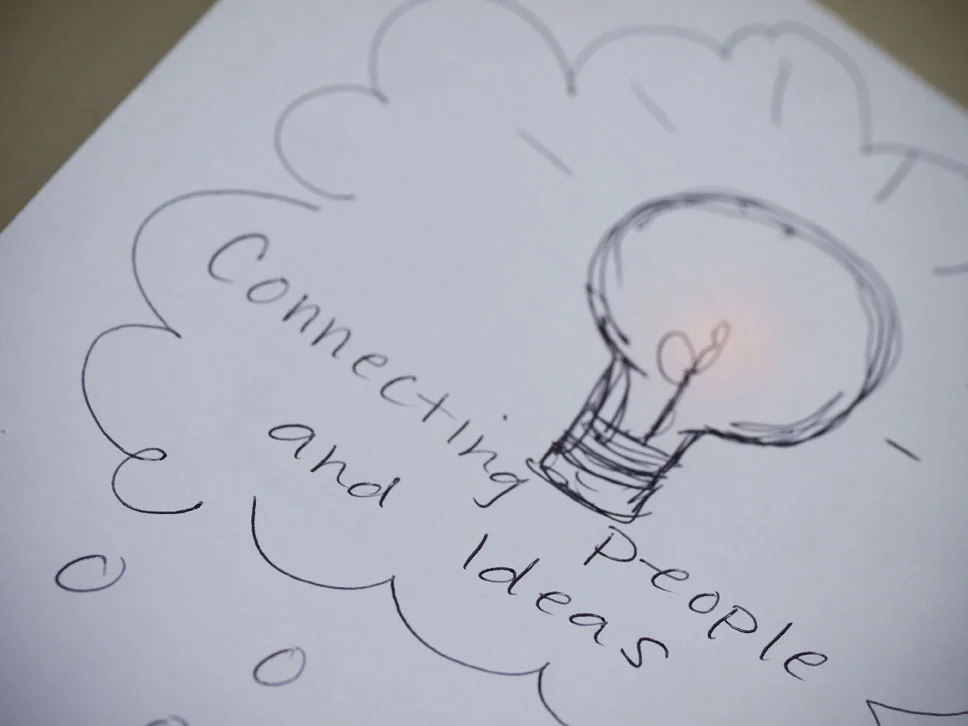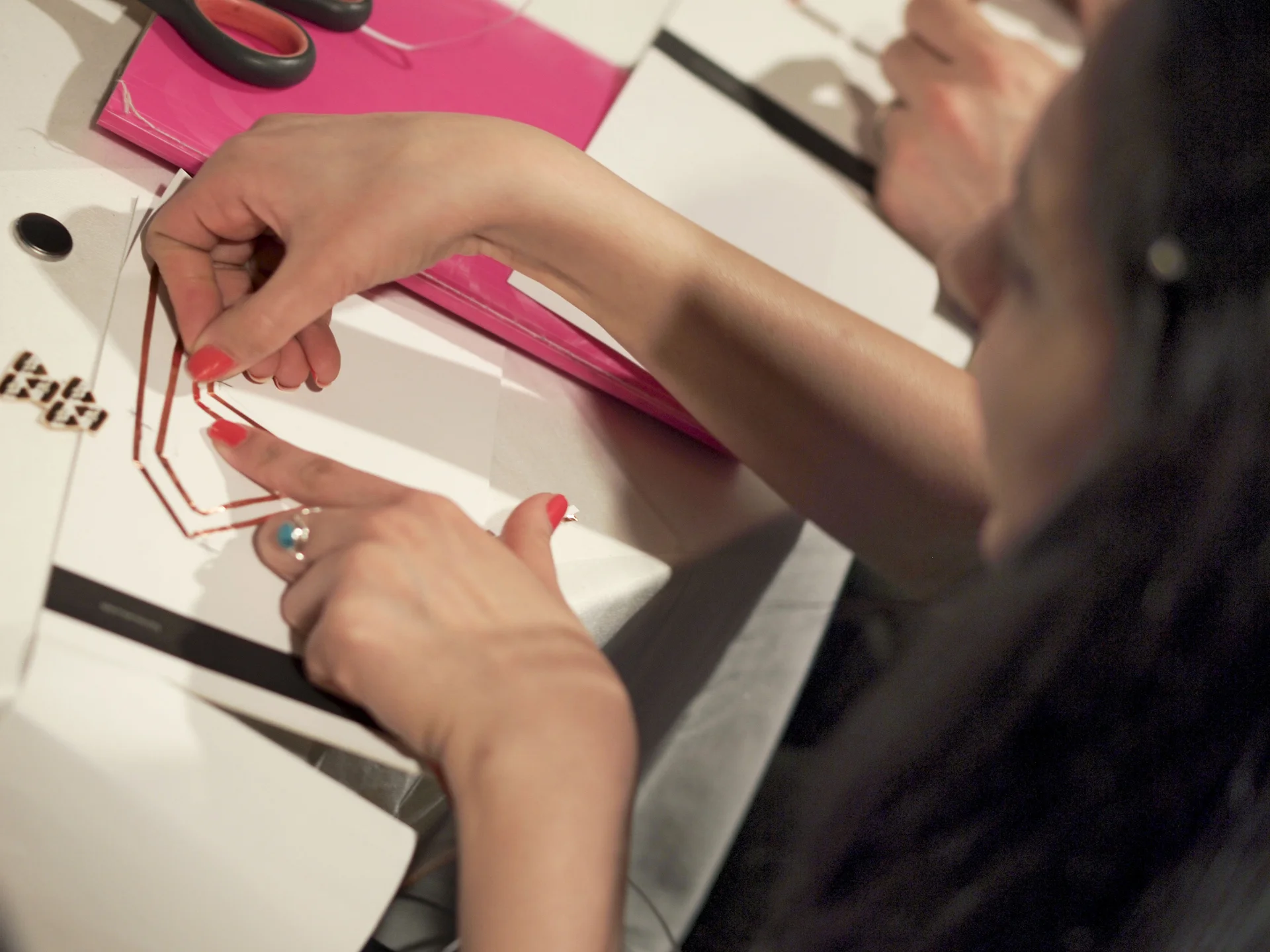David Cole of CV2 and I went to Denver, CO to hack notebooks with the second cohort of Intersections and the Denver Writing Project’s Tech Matters group. Now in our final installment, we reflect on a parent-child workshop with The Tech Museum of Innovation in San Jose from Saturday, June 28.
The workshop at The Tech involved a couple of firsts for us: our first museum workshop and our first intergenerational workshop. To adapt our previous workshop model for this particular environment and audience, we collaborated with members of the museum’s education and exhibitions teams: Bridget Rigby, Prinda Wanakule and Rebekah Nelson.
On Wednesday, June 25th, we spent three hours with the Tech Matters group from the Denver Writing Project at the Denver Museum of Nature and Science. These are K-16 teachers who are interested in learning how to best use technology to support and enhance classroom instruction. Educational technology tools and platforms can have very rapid life cycles, and trying to stay on top of all these changes can be daunting when added on top of a full teaching load, parent-guardian communication, lesson planning, grading, and so on. By working together, professional learning communities such as Tech Matters make it easier for teachers to share information. This summer, the group’s convening focused on issues of social justice and connectivity.
Design thinking is getting a lot of attention in some education and business circles these days. More people are realizing the importance of putting the user at the center of the design process to ensure whatever is being made meets their actual and not perceived needs. Quality education experiences likewise require program staff to design for specific contexts.
Working with so many different types of people—classroom teachers, museum educators, library patrons and the general public—means that we get the opportunity to examine crafting creative learning experiences from many different perspectives. The result is the ability to apply the insights unique to each group and use them to benefit how we design for the others. As we gather more information about what works and what doesn't, we are able to iterate and improve upon materials and activity structures to provide the most engaging experiences possible.
The education system is complex. It has diverse stakeholders and plays out in equally diverse environments. To make any sort of sustainable change, you have to be able to engage many stakeholders at all levels of systemic influence. As Inside/Out seeks to change how people think about creativity, STEM and notebooking, we’ve found a strong cohort of teacher-leaders to help us explore how these practices might live in a classroom. In the past five days, we’ve added new stakeholders to the conversation: makers, entrepreneurs, museum educators and pre-service teachers.
Last month, David Cole of CV2 and I went up to Everett, WA to give two professional development workshops on paper circuitry with middle school math teachers and elementary school teachers. Being former English teachers ourselves, it was really great to see how math teachers would approach this work and what connections they would make. We weren’t disappointed! They came up with fantastic ideas for using Jie’s circuit stickers in the classroom.
We were excited to find out Jie's friend and colleague, Natalie Freed, now lives in the Bay Area and even more excited to meet her and learn more about her own paper circuitry explorations. She told us about the SparkCore, a new low-profile Bluetooth LE board that makes it very easy to connect electronics projects to the Internet. We explored the possibilities of connecting a paper notebook to the web—why might you want to do this? What would you want it to do for you and your work? Natalie agreed to prototype a Wi-Fi connected notebook with us and she made this beautiful exemplar of what a multidisciplinary inquiry-based notebook can look like.
We had a great time at the Digital Media and Learning (DML) conference in Boston last week. DML, supported by the MacArthur Foundation, has been convening researchers, educators, educational technology industry professionals, and other stakeholders around issues of engaging youth in and out school to become digital media creators, active in civic matters, and lifelong learners. NEXMAP and CV2 presented Saturday afternoon with Jie Qi of the MIT Media Lab, Natalie Freed, and Paul Oh of the National Writing Project (NWP) on our 21st Century Notebooking initiative. We led workshop participants through an activity of storytelling through paper circuitry.
About a month ago, I realized I just couldn’t deal with loose batteries in my notebook anymore. I couldn’t figure out a non-fiddly way to securely store them—if they were secure, then it took forever to fish them out and if not, well, I’d lose them. It made me think of Jie’s wonderful circuit sketchbook prototype that uses an auxiliary cell phone battery embedded in the back cover and can be charged via USB. How might a beginner create a simpler version of her circuit sketchbook?
We’ve had some success making simple circuits, parallel circuits, and incorporating simple mechanical switches into our paper circuitry prototypes, so it’s time to up our game. Working with Natalie Freed, a friend and colleague of Jie’s, I learned how to use some simple tools and components to program a microcontroller that lets me control the LEDs in my circuit. In this post, I share a quick overview of the project.
In the past few years, the Maker Movement and DIY enthusiasts have become an increasingly visible and vocal segment of the informal education community. The Internet has made it easier than ever to share resources, display projects, and form communities of interest. Classroom teachers are paying attention: a growing number of educators across grade level and subject matter expertise are seeking creative, hands-on learning experiences for their students to help them develop critical thinking and problem-solving skills. Click here to continue reading.
Teachers, SFUSD staff, and museum educators gathered at the M. H. de Young Memorial Museum to explore how science inquiry and fine art can combine to create rich interdisciplinary units for students across the K-12 spectrum for a day of professional development as part of the Science, Literacy, and Arts Integration in the Twenty-First Century (SLANT) program. Click here to read more.












